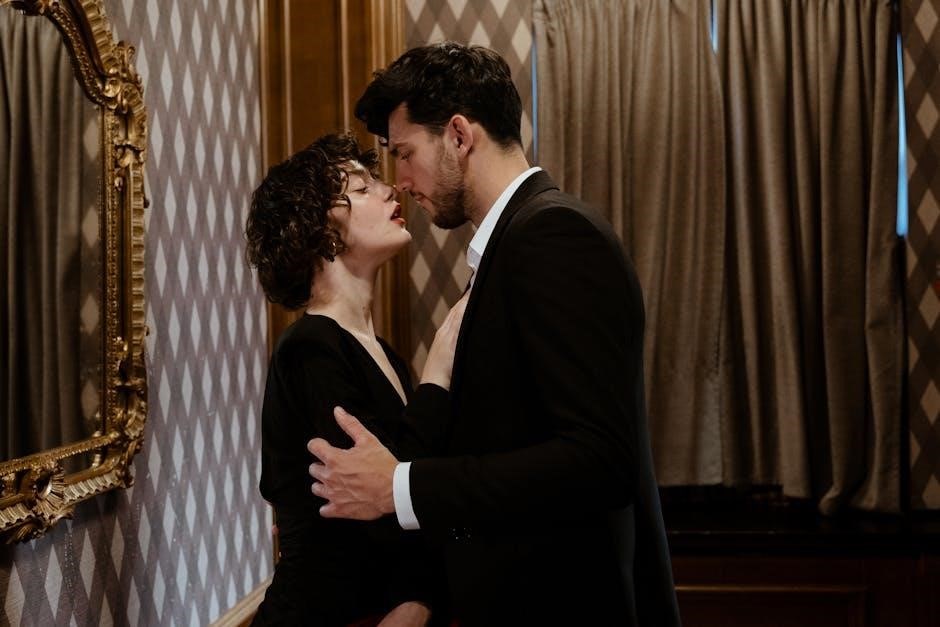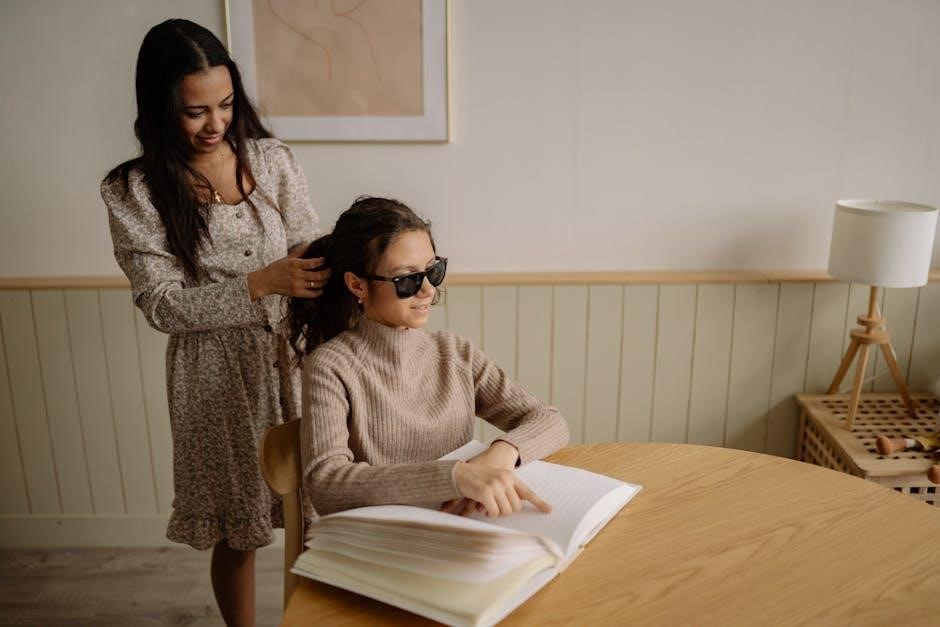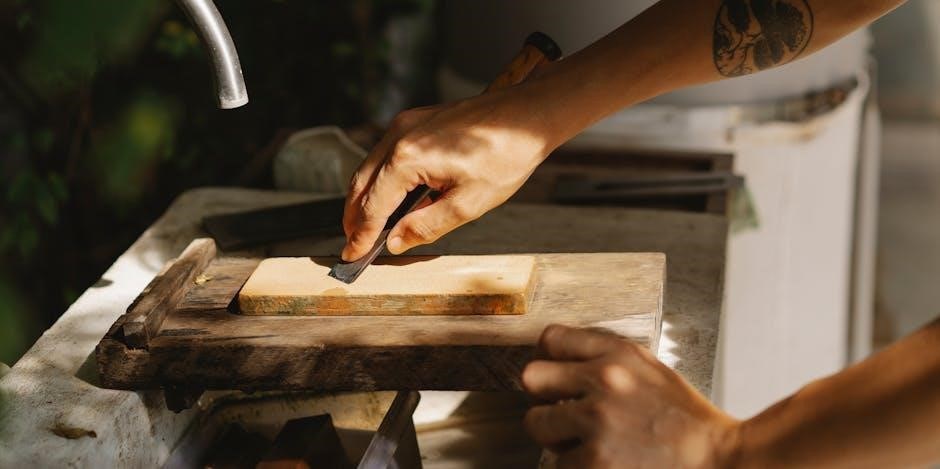A well-fitted suit jacket enhances confidence and style. This guide helps determine the perfect size by understanding key measurements like chest, shoulders, sleeve length, and body length.
1.1 Importance of Proper Fit
A proper fit is essential for both style and comfort. A well-tailored suit jacket enhances confidence, creating a polished and professional appearance. It ensures freedom of movement while maintaining a sleek silhouette. An ill-fitting jacket can look unflattering, restricting motion or appearing too bulky. Correct proportions ensure the jacket complements your body type, making it a wardrobe staple for any occasion. Investing in the right fit guarantees a sharp, put-together look that elevates your personal style and makes a lasting impression.
1.2 How to Measure Yourself
Measuring yourself accurately is crucial for selecting the right suit jacket size. Start by buttoning the jacket and laying it flat. Chest measurement is taken from pit to pit, then doubled for the full circumference. For shoulders, place the tape level across the back, ensuring it parallels the floor. Sleeve length is measured from the center back of the neck to the wrist with arms relaxed. Lastly, measure the body length from the base of the collar to the desired jacket hem. Use a tailor or mirror for precise results.

Understanding Measurements for Suit Jackets
Key measurements include chest, shoulders, sleeve length, and body length. Accurate measurements ensure a tailored fit, balancing comfort and style for any suit jacket.
2.1 Chest Measurement
The chest measurement is the most critical factor in determining your suit jacket size. To measure accurately, wrap a tape measure around the fullest part of your chest, keeping it level and snug but not tight. Ensure the tape measure is parallel to the floor and sits under your armpits. This measurement will help you identify your jacket size, as it directly corresponds to the chest size listed on the size chart. A proper fit ensures comfort and a polished appearance, making this step essential for choosing the right jacket.
2.2 Shoulder Measurement
The shoulder measurement is crucial for a tailored fit, as it ensures the jacket sits comfortably without restricting movement. To measure, place the tape measure across the back, starting from the tip of one shoulder and ending at the tip of the other. This distance determines the shoulder fit of your jacket. A proper shoulder measurement prevents the jacket from feeling too tight or too loose, ensuring a balanced and professional appearance. Accurate shoulder measurements are essential for maintaining both comfort and style in your suit jacket.
2.3 Sleeve Length Measurement
Sleeve length is measured from the center back of the neck to the wrist bone, ensuring the jacket cuff allows a slight shirt sleeve reveal (about 1/4 inch). Proper sleeve length enhances both style and functionality, preventing the jacket from appearing too short or too long. Accurate measurement ensures the sleeves align with your body proportions, providing a polished look. A well-fitted sleeve length contributes to the overall balance of the suit, making it essential for a professional and tailored appearance.
2.4 Body Length Measurement
Body length is measured from the base of the collar at the center back to the bottom of the jacket. Proper length ensures the jacket reaches the hip or slightly below. Stand upright with arms relaxed for accurate measurement. The jacket should cover the torso without being overly long or short. Ideal length balances proportions, ensuring a polished look. Correct body length is essential for a tailored appearance, avoiding a boxy or overly fitted silhouette. Accurate measurement ensures the jacket complements your posture and style seamlessly.
How to Read a Suit Jacket Size Chart
Understanding a size chart involves matching your measurements to chest, shoulder, and sleeve lengths. Ensure accurate fit by comparing your data to the chart’s specifications carefully.
3.1 Numeric vs; Alphabetical Sizing
Suit jackets use numeric or alphabetical sizing. Numeric sizes (e.g., 38, 40) represent chest measurements, while alphabetical (S, M, L) offer a broader fit range. Numeric sizing is precise, ideal for tailored fits, while alphabetical is more flexible, accommodating various body types. Understanding the difference helps in selecting the right size, ensuring comfort and style. Always refer to the specific sizing chart provided by the brand for accurate measurements and the best fit.
3.2 Understanding Pants Sizing
Suit pants sizing is often separate from jacket sizing, focusing on waist and inseam measurements. Pants sizes may correspond to jacket sizes or be listed separately. Some suits offer matching sizes for jackets and pants, while others require individual measurements. Waist size is typically measured around the natural waistline, and inseam is measured from the crotch to the desired pant length. Accurate measurements ensure a balanced fit, as ill-fitting pants can disrupt the overall appearance of the suit. Always refer to the brand’s size chart for precise sizing guidance.
3.3 International Size Differences
Suit jacket sizes vary across countries due to differing measurement standards. For example, a US size 42 may not match a European or UK size 42. Understanding these differences is crucial for international shoppers. European sizes often run smaller than US sizes, while UK sizes align closely with US measurements. Always consult the brand’s size chart, as some may adopt universal sizing. To ensure a proper fit, compare your measurements to the specific region’s sizing standards. This step avoids discrepancies and guarantees a jacket that fits well regardless of the country of origin.

Factors Influencing the Fit of a Suit Jacket
Body type, fabric weight, and personal style are key factors affecting suit jacket fit. These elements ensure a tailored look and comfort, making each jacket uniquely suited to the wearer.
4.1 Body Type Considerations
Different body types require tailored fits for optimal comfort and aesthetics. For broader shoulders, a slightly longer sleeve may be necessary, while slimmer builds benefit from a more streamlined cut. Ensuring the jacket’s chest measurement aligns with your body’s natural proportions is crucial, as it prevents strain and maintains a polished appearance. Additionally, the jacket’s length should complement your torso, avoiding styles that overwhelm or appear too snug. By considering these factors, you can achieve a balanced, flattering fit that enhances your physique.
4.2 Fabric and Weight Impact
Fabric and weight significantly influence a suit jacket’s fit and comfort. Heavier fabrics, like wool, may require a slightly larger size due to their thickness, while lighter materials, such as linen, drape differently and may fit more snugly. The weight of the fabric affects how it sits on the body, with heavier fabrics providing structure and lighter ones offering flexibility. Consider the fabric’s breathability and seasonality to ensure optimal comfort. Ultimately, the fabric’s weight and type should align with your lifestyle and the occasions you plan to wear the jacket, ensuring both form and function.
4.3 Personal Style Preferences
Personal style preferences play a crucial role in selecting a suit jacket. Some prefer a modern, slim fit for a contemporary look, while others opt for a classic fit for comfort and tradition. Slim-fit jackets hug the body closely, ideal for fashion-forward individuals, whereas classic fits offer a looser, timeless appeal. Additionally, personal style may influence choices like single vs. double-breasted designs or peak vs. notch lapels. Ultimately, balancing personal style with proper fit ensures a jacket that flatters and reflects individuality, making it a wardrobe staple for any occasion.

Choosing the Right Style of Suit Jacket
Selecting the right style involves considering modern, classic, or slim-fit options, each catering to different body types and personal aesthetics for a tailored look.
5.1 Modern Fit vs. Classic Fit
The modern fit suit jacket is tailored closer to the body, offering a sleek, contemporary look with slightly shorter lengths and trimmer sleeves. In contrast, the classic fit provides a more relaxed silhouette, featuring broader shoulders and a longer jacket length for a timeless appeal. Both styles accommodate different body types and personal preferences, ensuring a sharp, polished appearance. Understanding these distinctions helps in selecting the most flattering option for individual tastes and occasions.
5.2 Slim Fit Suit Jackets
Slim Fit suit jackets are designed for a contemporary look, offering a tailored fit that skims the body without being restrictive. They feature narrower shoulders, shorter jacket lengths, and slimmer sleeves compared to Classic Fit styles. This style is ideal for individuals with a leaner build or those preferring a modern aesthetic. The Slim Fit provides a sharp, polished appearance while maintaining comfort, making it suitable for both formal events and business settings, ensuring the wearer looks stylish and put-together effortlessly.
5.3 Different Jacket Styles
Suit jackets come in various styles to cater to different preferences and body types. The Single-Breasted jacket is the most common, featuring a single row of buttons and a streamlined design. Double-Breasted jackets offer a more formal look with two rows of buttons, ideal for broader shoulders. Blazers are less formal, often without vents, and perfect for casual or business-casual settings. Each style has unique features, such as lapel types and button placements, allowing individuals to choose a jacket that complements their physique and personal taste while maintaining a polished appearance.
Common Fit Issues and Their Solutions
Addressing fit issues like sleeve length, shoulder alignment, and jacket proportions ensures a tailored look. Tailoring adjustments can resolve these problems for a perfect, customized fit.
6.1 Sleeves Too Long or Too Short
Sleeves that are too long or too short can ruin the fit of a suit jacket. Ideally, the jacket sleeves should allow about 1/4 inch of shirt cuff to show, creating a balanced look. If the sleeves are too long, they can make the arms appear shorter, while sleeves that are too short may give an unfinished appearance. To fix this, adjustments can be made by a tailor, shortening or lengthening the sleeves to achieve the perfect proportion. Proper sleeve length ensures a polished and professional look.
6.2 Jacket Length Issues
Jacket length is crucial for a balanced fit. A jacket that is too short may make the torso appear longer, while one that is too long can look boxy. Ideally, the jacket should hit just below the hip for most styles, though this varies slightly with fashion trends. If the jacket length is off, it can affect the overall proportions of the suit. Tailoring can address this by shortening or lengthening the jacket to create a more streamlined appearance, ensuring the suit looks polished and well-fitted. Proper jacket length enhances both style and confidence.
6.3 Shoulder Fit Problems
Shoulder fit is critical for a suit jacket, as ill-fitting shoulders can make the entire garment look unbalanced. If the shoulder pads are too wide or too narrow, the jacket may appear boxy or restrictive. A common issue is when the pads extend beyond the natural shoulder line, creating an unflattering silhouette. Conversely, pads that are too small can make the jacket look tight and uncomfortable. Tailoring can often resolve these problems by adjusting the pads or re-shaping the shoulder area. Proper shoulder fit ensures the jacket drapes naturally, enhancing both comfort and aesthetics.

Tips for Ensuring the Best Fit
Ensure a perfect fit by getting professionally measured and considering fabric choice. These steps guarantee comfort and style, making your suit jacket look tailored to perfection.
7.1 Getting Professionally Measured
Professional measurements ensure accuracy and a tailored fit. A tailor uses a flexible tape measure to determine chest, shoulder, sleeve, and body length. This service is crucial for off-the-rack suits, as it highlights areas needing adjustments. Many online retailers offer measurement guides, but a professional provides precise results, avoiding common fit issues like sleeves too long or too short. By investing in professional measurement, you achieve a polished, custom-like appearance, enhancing both style and comfort.
7.2 Considering Fabric Choices
Fabric choice significantly impacts both comfort and appearance. Wool and cashmere are popular for their breathability and texture, while linen offers a lightweight, summer option. Polyester blends provide durability but may lack luxury feel. Seasonal considerations matter; heavier fabrics suit colder climates, while lighter ones are ideal for warmth. Fabric weight influences drape and fit, affecting how the jacket sits on the body. Personal style also plays a role, as some prefer structured fabrics for a sharp look, while others opt for softer textures. Balancing fabric type with body type ensures optimal comfort and aesthetic appeal.
Alteration Options for Off-the-Rack Suits
Alterations are common for off-the-rack suits to ensure the best fit. Options include shortening sleeves, adjusting hems, or tweaking shoulders. While they enhance fit, they add cost and time.
8.1 Common Alterations Needed
Common alterations for suits include sleeve shortening, pant hemming, and shoulder adjustments. Sleeve length is often adjusted to show shirt cuffs, while pants are hemmed for a clean break. Shoulder pads may be repositioned for better fit. Jacket length can be modified if it’s too long or short. These tweaks ensure a tailored look without the cost of a custom suit. Tailors can also take in or let out seams for a more precise fit, improving both comfort and aesthetics. Proper alterations make a significant difference in the overall appearance of the suit.
8.2 Costs and Time for Alterations
Alteration costs vary depending on the type of adjustment. Basic tweaks like sleeve shortening or pant hemming typically range from $20 to $50. More complex changes, such as reshaping shoulders or adjusting jacket length, can cost between $50 to $150. Tailors usually require 3-7 business days for standard alterations, though rush services may be available for an additional fee. Prices and turnaround times depend on the tailor’s expertise and workload. Investing in quality alterations ensures a better fit and extends the life of your suit. Plan ahead to avoid last-minute expenses or delays.



